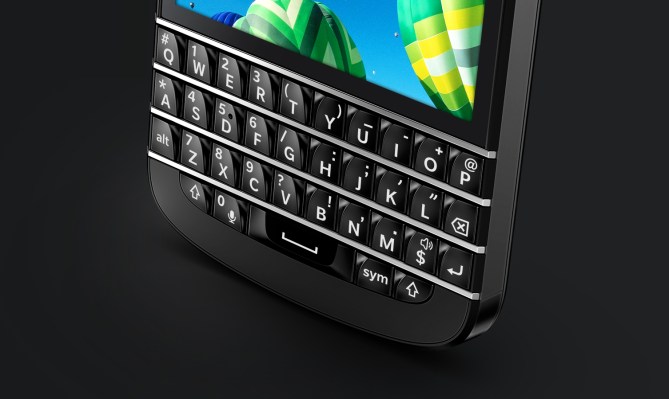Today I switched from a BlackBerry Q10 to an iPhone 5s. After almost singlehandedly trying to save the physical QWERTY, I feel compelled to explain why.
It isn’t because of the ribbing I get from my TC colleagues every time BlackBerry issues more bad news. It isn’t because the only people I know who still use a BlackBerry are either VCs or angel investors. And I’ve yet to make the blogger-to-VC career move (here’s hoping).
It isn’t even because the keyboard on my Q10 has developed a hardware fault whereby occasionally it mistook one key press for two, which makes keying in my lock-screen password a whole lot of fun. That’s right, folks. Even BlackBerry can’t seem to make a reliable hardware keyboard.
And it definitely isn’t because I’ve suddenly mastered typing on glass, despite having a physical disability that makes certain touchscreen interfaces and on-screen keyboards more challenging (see my email to Steve Jobs on the subject).
No, the reason I’ve finally given up on the BlackBerry — and with it my trusted physical QWERTY – is likely the reason every other BlackBerry user abandoned ship. Apps. Glorious apps.
In the end, I’ve decided to make a tradeoff. I’m willing to sacrifice typing speed and a little dexterity, in return for having access to a much wider range and higher quality of apps. Blame it on the day job.
What’s interesting is BlackBerry 10 does support Android apps — kind of.
The trouble is the Q10’s screen size makes many of those apps run poorly or not at all, with UI elements being squashed or cropped. It was enough to get by for a little while (and a technically impressive feat), but it only got me so far. The tipping point came this week while trying out a Wi-Fi-enabled lightbulb for a smarthome post I’m researching. I was able to dim the lights using the startup’s Android app running on my BlackBerry but couldn’t turn them back up again, leaving me stuck in the dark for a couple of hours.
Then I saw the light.
I ordered my iPhone 5s just a few hours ago, and it wasn’t without a heavy heart.
I’ll definitely miss BlackBerry 10’s gestures and the majority of its UI (I once had the privilege of chewing the fat with one of the ex-founders of TAT, the team behind much of that work — sorry guys).
I’ll also undoubtedly miss BlackBerry 10’s ‘openess’ in terms of side loading apps and full access over Wi-Fi to the phone’s storage. I definitely don’t relish being back in Apple’s closed ecosystem.
At the same time I’m grateful the iPhone in its current form factor exists. At one point in time, as the physical QWERTY was getting sidelined, the market was flooded with iPhone copycats. In some ways it still is. But, actually, as phones have gotten bigger, it’s Apple’s device that feels, well, traditional. Steadfast was Jobs’ assertion that the iPhone needed to remain narrow for one-handed operation.
It’s the size factor — and that iOS still tends to get first preference from newly launched startups — that largely ruled out Android for me. The closest to getting my hard-earned cash was something like the HTC One Mini, but even that is too wide. In a sea of “phablets,” a “mini” Android smartphone invariably comes in larger than the iPhone 5s, or with lower specs and build quality.
The iPhone 5s also feels remarkably light.
What I’ve come to realise is, although I get on better with a physical QWERTY and the non-touch screen area it affords when gripping the phone, equal to this is the right width, height and weight. In that sense, like BlackBerry before, it’s now Apple who looks like the holdout.
Unless, of course, the rumours of a much larger iPhone are true.
